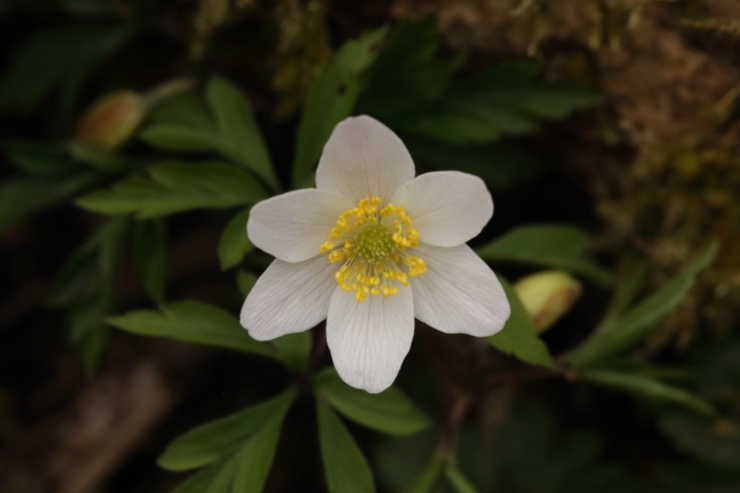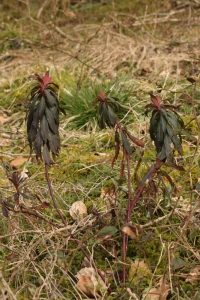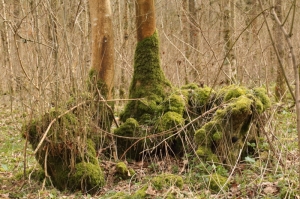Yesterday (23/03/2018) I made my second visit to Bodkin Hazel Wood which is in south Gloucestershire. The purpose of the visit was to try and find some Yellow Star of Bethlehem plants which are recorded as growing there on the SSSI schedule for this site. However that was drawn up some years ago and they may or may not still be growing there. As you will gather from what I have just said, I did not find any. I spent several hours walking ‘transect lines’ up and down the wood, four lines up and four lines down, so I covered most of the wood. I am fairly sure that had a small patch of this plant been in flower then I would have seen it. Unfortunately it is a bit of a reluctant flowerer, if that is such a word. It may well have been there but not in flower.
This is what I did see, there were a few patches of Moschatell, unfortunately not yet in flower as I do need some photos of this little plant.
There were a few orchid leaves showing and I suspect these are Early Purple Orchid, I only saw about five plants but there are probably many more. This serves to illustrate how easy it would be to miss a couple of Yellow Star of Bethlehem plants if they were not flowering.
I came across quite a few of the big clumps of leaves which I saw on my last visit and these were the ones I posted on the Wild Flowers group on Face Book and which several members assured me were Bluebells…. well I was sure at the time that they were not and am even more convinced they are not now. I am fairly certain that they are Autumn Crocus.
There were lots of Primroses in flower, including a pale pink version. You often see this type in old gardens but not often in the countryside. These primroses are growing a long way from any gardens, so this plant either arose without cross pollination from a garden plant, or they have some long haul bees in south Gloucestershire.
Wood Anemones were just coming into flower, I love these plants,the flower is so simple and beautiful.
Not flowering but lots of it was Pignut with the frondy leaves and some Wood Spurge. This plant with its dark red to purple leaves for some reason reminded me of a cockerel’s head.
The wood is blessed with lots of mosses and this one was particularly attractive. I also like the old coppice stools which indicate a long history of management. I took lots of photos of these on my last visit but this one attracted my attention this time as it really shows how one original tree can spread out and form a ring after many rounds of coppicing, the central core rots and the outer region continues to expand.
There were several Roe Deer present but with a macro lens on my camera, photographing them was not really an option.
I doubt I will visit this wood again anytime soon as it is a long way by road, involving Severn Bridge, M 4 and on the way back lots of little roads through to the M 5 then round Gloucester and back through the Forest of Dean. When the Severn Bridge toll is removed it might worth another trip. To check out my first visit click
ssp. sibthorpii is supposed to come true from seed, but I suppose pinkness might arise as a non-genetic variation in populations of yellow ones. Interesting, and a lovely photo of a delightful plant.





You have some good finds here despite not seeing the Yellow Star of Bethlehem. I do hope you find one in flower eventually – maybe the cold weather has held it back? I am sure I read in one guide (though I can’t remember which one) that the pink primroses are naturally occurring and aren’t necessarily the result of cross-fertilisation.
LikeLike
There is a FB group for wild flowers of Britain and Ireland which I am a member of and it has about 12,000 members!!!! Some are very knowledgeable and some think they are…. but it is generally a worthwhile group to be part of and they inform me that the pink primrose is a subspecies from SW Europe, but it is grown in gardens and then gets its genes into local populations.
LikeLiked by 1 person
I belong to that group too! I found your post earlier and read the comments. I like your comment ‘Some are very knowledgeable and some think they are…’ 😀 Very true!
LikeLike